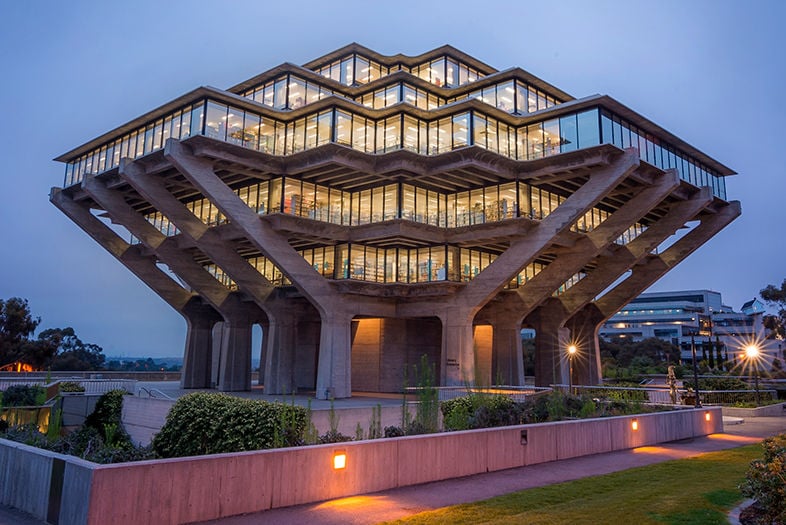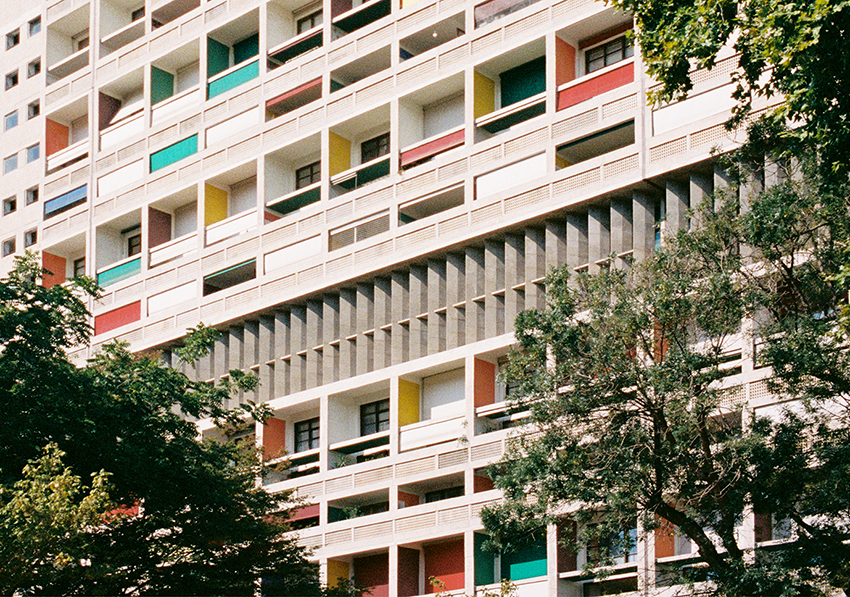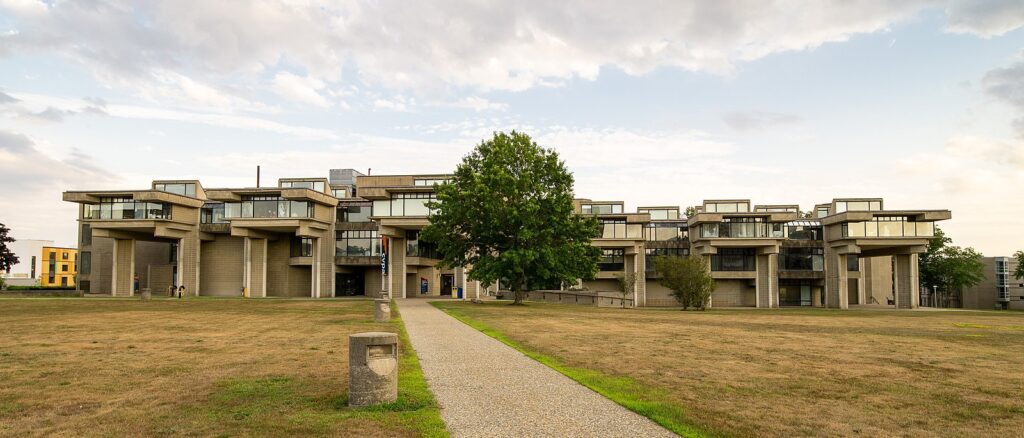In the field of architecture, few styles spark as much debate and difference of opinion as Brutalism.
With its imposing concrete structures and raw, rigid aesthetic, Brutalist architecture stands in stark contrast to the sleek lines and glass facades of modernist buildings.
But this daring style continues to intrigue scholars and architects for its stylistic and thematic symbolism, simultaneously inspiring both boldness and fear in onlookers.

Origins and Philosophy
The term “Brutalism” derives not from the aggressive or ugly appearance of the buildings constructed in this style, but rather from the French word “béton brut.” This means “raw concrete.”
This is because Brutalist buildings typically are built with concrete as the main construction material.
Emerging in the mid-20th century, Brutalism was born out of the post-war era’s desire for social progress, functionalism, and a desire for more efficiently utilizing fewer available resources as the economy recovered.
Architects sought to create structures that were honest, utilitarian, and in harmony with their surroundings in contrast with the previous years of war and destruction.
One of the pioneers of Brutalism was the Swiss-French architect Le Corbusier. His iconic works such as the Unité d’Habitation in Marseille epitomized the style’s principles of modular design, geometric forms, and expressive use of concrete.
Brutalist architects embraced the inherent qualities of concrete – its strength, durability, and versatility – to create monumental and minimalist buildings.
Effective and pragmatic buildings sprung up around the world quickly. This coincided with the rapid growth of the global economy and population.

Characteristics of Brutalist Architecture
Brutalist architecture is characterized by several key features that distinguish it from other styles. Foremost among these is the prominent use of raw concrete, often left exposed and unpainted to showcase its texture and grain.
The rough, unfinished appearance of concrete gives Brutalist buildings a sense of authenticity and honesty. It reflects the materials’ essential qualities that architects were using to inspire the postwar world.
Another defining characteristic of Brutalism is its emphasis on massiveness and monumentality. Brutalist structures often feature bold, geometric forms that dominate the surrounding landscape.
These buildings command attention through their sheer scale and presence, inviting viewers to engage with them on a visceral level. The imposing shape of Brutalist buildings was designed to dominate the minds of those witnessing them, inspiring awe and reflection.
Brutalist architecture also tends to prioritize function over form. This is an emphasis on rationalism, efficiency, and simplicity.
Floor plans are often modular and flexible, allowing for easy adaptation and reconfiguration to meet changing needs over time. The focus on utility and practicality extends to the design of interior spaces.
These are often characterized by open floor plans, exposed structural elements, and ample natural light. Even the building material itself represented the functionality of the design.
Concrete was simple to create but lasted a long time, indicating a high return on investment.
Enduring Legacy and Influence
Brutalist architecture has faced criticism and controversy even since its heyday. Concrete originally was perceived as a reliable building material that would last almost permanently.
This was enticing for architects and fit with the pragmatic purpose of the design. However, it was discovered in the following decades that concrete was subject to easily crumbling from the inside and actually was not a reliable building material.
Constant repairs of brutalist buildings have discouraged positive opinions about the style.
Brutalism’s efficient construction and cold, emotionless style also became closely associated with the massive construction projects in the Soviet Union. This aligned the style closely with the totalitarian regime leading that country.
This further deteriorated opinions about brutalism. It associated concrete block buildings with poverty, brutality, and inefficiency rather than the motivational and honest inspiration that it originally stood to represent.
Today, many see brutalist architecture as cold and impersonal, with an intimidating and dangerous presence.

Despite the issues with Brutalism, the style has since garnered a newfound appreciation and admiration among architects, scholars, and preservationists.
Today, Brutalist buildings are celebrated for their boldness, authenticity, and uncompromising vision, as well as their contribution to the architectural landscape.
Buildings constructed in this style have left an indelible mark on cities around the world. The buildings are iconic landmarks such as the Barbican Estate in London, the FBI Headquarters in Washington, D.C., and the Habitat 67 in Montreal serving as enduring symbols of the style’s enduring legacy.
These buildings continue to inspire and influence architects and designers, who draw inspiration from Brutalism’s principles of honesty, integrity, and innovation.
Challenges and Preservation Efforts
Despite its cultural significance and architectural merit, Brutalist architecture faces numerous challenges, including neglect, decay, and demolition. Many Brutalist buildings have fallen into disrepair due to the nature of concrete.
They crumble over time and face threats of demolition due to changing tastes, lack of maintenance, and urban redevelopment pressures.
In response, preservationists, architects, and enthusiasts have rallied to protect and celebrate Brutalist buildings through advocacy, education, and adaptive reuse.
Efforts to preserve and rehabilitate Brutalist landmarks have gained momentum in recent years. There have been initiatives such as the Brutalist Architecture Map, which documents and highlights notable examples of the style around the world.
The fight for Brutalism is an uphill battle due to the negative perceptions of the style. But the tide has begun to shift to encourage people to see the beauty in the concrete structures.
In a world of fleeting trends and transient fashions, Brutalist architecture stands as a testament to the enduring power of boldness, authenticity, and innovation.
Over time, it has become perhaps the most contentious architectural style, with people either loving or hating it. But as Brutalism has fallen under threat of being dismantled, advocates have rallied to preach its merits.
With its raw, unapologetic aesthetic and uncompromising vision, Brutalism challenges us to rethink our notions of beauty, utility, and the built environment.
References
Hohenadel, Kristin. “What Is Brutalist Architecture?” The Spruce, September 7, 2023. https://www.thespruce.com/what-is-brutalism-4796578.
McLaughlin, Katherine. “Brutalist Architecture: Everything You Need to Know.” Architectural Digest, July 12, 2023. https://www.architecturaldigest.com/story/brutalist-architecture-101.